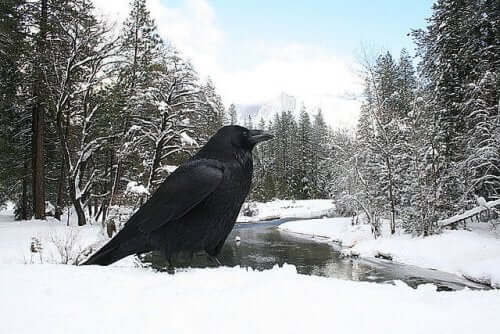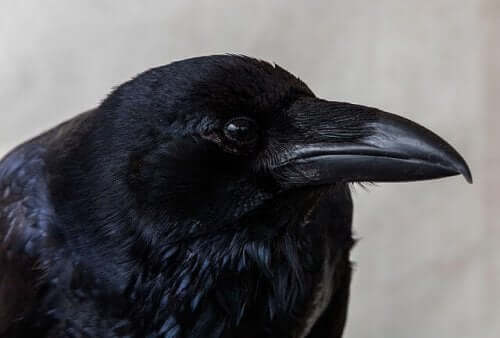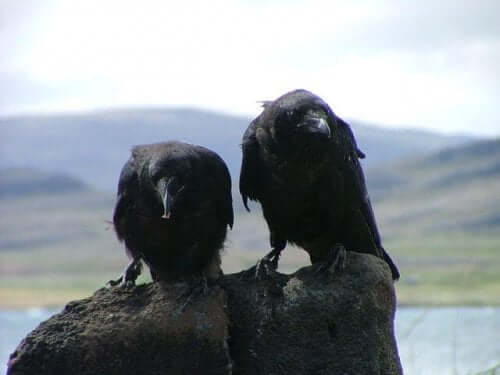The Crow in Popular Culture and Mythology

The large crow is an iconic species of corvids, a group of highly intelligent birds. This species has the widest distribution of all corvids. In addition, they inhabit the Arctic, Europe, North America, Africa, England, and the Everest. Continue reading to find out more about the crow in popular culture.
Blame it on its strong intelligence and opportunistic personality. It’s led them to approach human settlements in order to take advantage of our leftovers. This is just what links this animal to the various cultures around the globe. Furthermore, it allowed the crow to find a place in human legends, tales, and well-known books throughout the centuries.
This bird appears in many religious books such as the Bible. In it, Noah uses one to search for dry land and to check on the recession of the flood. Additionally, it’s the crows who supposedly saved the prophet, Elijah, from famine. Finally, they’re also an Inuit deity.
The crows in popular culture – Norse mythology
The Vikings are the group that historically made the most references to this animal. One of the most famous, Ragnar Lodbrok, used this species in his banner. In fact, the crow appears in many flags and coats of arms. Also, it had some kind of association with Odin, one of their main deities.

In Norse mythology, Odin is accompanied by two crows. Hugin, who symbolizes thought, and Munin, who represents a memory. These crows informed the Lord of the Nordic gods of everything that went on in their kingdoms.
Some believe that crows were also identified as a representation of the Valkyries. These are the creatures who take the warriors fallen in battle to Valhalla, the warlike paradise of the Nordics. Actually, it makes a lot of sense, because crows are scavengers who would infest a battlefield.
In Norse mythology, Odin is accompanied by two crows: Hugin, which symbolizes thought, and Munin, who represents a memory.
The crow in popular culture – other European legends
For the Celts, crows had a link with battlefields and war. For instance, Morrigan, the goddess of death, could mutate into a crow. Badb, the goddess of war also had this power, and could also turn into a wolf. They both took advantage of men’s wars, just like crows do.
These birds appear in many legends and myths in European cultures. One of the most striking is the story of Federico Barbarossa. He was an ancient German king who fell asleep in one of the mountains of Thuringia (Germany). The legend says he’ll wake up when the crows stop flying around the mountain.
As for the Greeks, Apollo is supposedly responsible for the black feathers of the crow. According to their mythology, crows used to be white. They failed to watch Coronis, lover of Apollo, so he punished them by dressing them in black forever.
The British monarchy, endangered by crows
One of the most interesting legends is the one that says that England and its monarchy will end when there are no more crows in the Tower of London. There are many legends about this, however. There are those who say that the crows went there attracted by the corpses and, in fact, there’s a record of them in accounts of historical executions, such as that of Anne Boleyn and Jane Gray.

Another legend says that an astronomer trimmed the crows’ wings so he could work without them being an obstacle while he watched the sky. And other stories say that Charles II pardoned them and had them kept in the Tower of London after a great fire.
In reality, there have been no wild crows in London for a while, and the ones in the tower aren’t free to come and go as they please. In fact, only one of them survived the bombing during World War II. So, Winston Churchill ordered more. The crows from the Tower of London were then enlisted as if they were soldiers of the Kingdom. They could be demoted, expelled from the army, and had their own IDs.
The crow in popular culture – kings of literature
Crows appear in many literary works. Actually, they’re the protagonists in the works of Edgar Allan Poe, Aesop’s fables and Dickens’ stories. They’re part of the Erebor symbology in The Hobbit. In addition, they have a central role in the Game of Thrones series, in which they are a communication channel and represent the Night’s Watch.
Finally, the crow also appears in books by Stephen King and Asimov. It’s also the animal in one of the Harry Potter houses. Undoubtedly, they rightfully earned this leading role.
